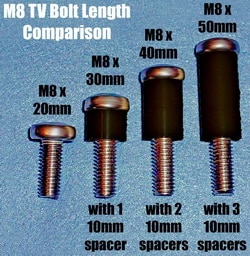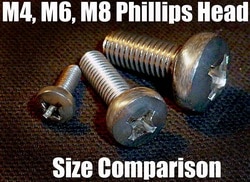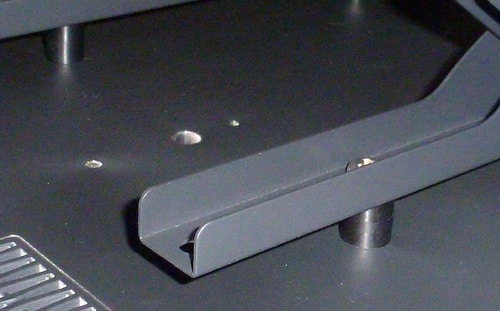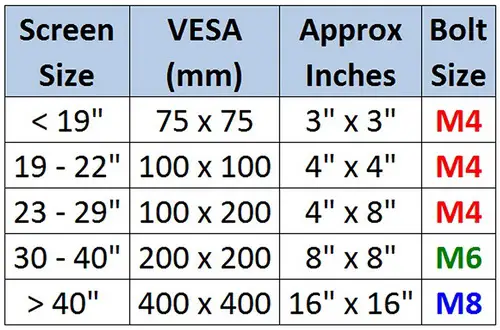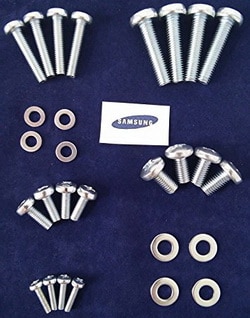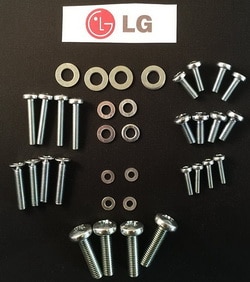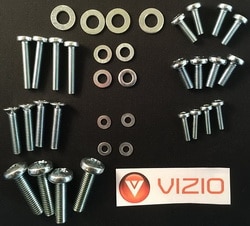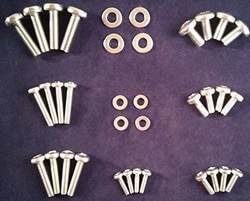Unfiltered raw news for the reader without the bullshit censured in other places; with a lot of those “ conspiracy theories” that are being proved we are correct
Sunday, March 31, 2019
Saturday, March 30, 2019
#CNN Fake News told us that no 1 meter of the wall has been built # See to believe it

Pentagon Releases $1 Billion to Begin Trump's Border Wall Construction First payment authorized for Yuma and El Paso sections of the US-Mexico border
READ MORE: https://neonnettle.com/news/6923-pentagon-releases-1-billion-to-begin-trump-s-border-wall-construction
© Neon Nettle
Friday, March 29, 2019
Find out which screw size and length will attach TV to Wall Bracket
What SIZE Screws Do I Need From Wall Bracket To TV?
Find out which screw size and length will attach TV to Wall Bracket
Screws for Mounting TV to Wall Bracket:
The most common screw for securing the TV to the wall bracket is an M8 screw.
The other screw sizes for some TVs are M4, M5, and M6.
The length will be determined by the type of TV you have.
The most common screw for securing the TV to the wall bracket is an M8 screw.
The other screw sizes for some TVs are M4, M5, and M6.
The length will be determined by the type of TV you have.
Here are 4 screw kits for mounting your TV to the wall mount bracket…
M8 TV Mount Screws with Rubber Spacers
M8 x 20mm – M8 x 30mm – M8 x 40mm – M8 x 50mm
M4 M6 M8 Screw Size Comparison Chart
Notice the sizing differences on M4, M6, and M8 screws
The length of the screws will be in conjunction with the depth of your specific TV.
The most common M8 screw lengths for TVs is 10mm, 12mm, 20mm, 25mm, 30mm, 40mm, 50mm, and 60mm.
There are some TVs that require a longer millimeter screw.
Most screws will need to have a spacer on it to allow airflow behind TV, etc.
See image below to see spacers on TV screws…
The most common M8 screw lengths for TVs is 10mm, 12mm, 20mm, 25mm, 30mm, 40mm, 50mm, and 60mm.
There are some TVs that require a longer millimeter screw.
Most screws will need to have a spacer on it to allow airflow behind TV, etc.
See image below to see spacers on TV screws…
TV Mount With Rubber Spacers Applied To Screws
Spacers are used on TV Mount screws for airflow and length issues
Wall Bracket To TV Screws Chart – VESA
M4 – M6 – M8 – B0lt Screw Sizes – Screen Size – VESA
To find the depth or length of the screw you need:
Put a pencil or toothpick down into the screw hole to find a rough estimate of the depth or length of screw needed.
You can also purchase a Universal TV to Wall Bracket Screw Kit and have all the screws needed including spacers and washers.
The screw that holds the mounting bracket to the TV should have at least 5mm of threads into the TV to hold it secure.
Be sure you add the depth or thickness of the TV mounting bracket when finding the correct screw length.
Put a pencil or toothpick down into the screw hole to find a rough estimate of the depth or length of screw needed.
You can also purchase a Universal TV to Wall Bracket Screw Kit and have all the screws needed including spacers and washers.
The screw that holds the mounting bracket to the TV should have at least 5mm of threads into the TV to hold it secure.
Be sure you add the depth or thickness of the TV mounting bracket when finding the correct screw length.
HOW TO HANG YOUR TV ON A WALL MOUNT – STEP BY STEP
Universal Mount Kit – Find Stud – 24″ – Mount On Stud – Drywall
Take the guesswork out of finding the correct size and length screws for your TV to Wall Bracket…Here are TV to Wall Bracket Screw Kits for Samsung TVs, LG TVs, Vizio TVs, and Universal TV Mounting Screws and Washer Kits.
Samsung TV Mounting Bolts Screws Washers
This screw kit will fit ALL Samsung TVs when mounting the TV to the Wall Bracket
LG TV Mounting Bolts Screws Washers
This screw kit will fit ALL LG TVs when mounting the TV to the Wall Bracket
Vizio TV Mounting Bolts Screws Washers
This screw kit will fit ALL Vizio TVs when mounting the TV to the Wall Bracket
Universal TV Mount Screws
This screw kit will fit MOST TVs when mounting the TV to the Wall Bracket
Mounting a TV to a wall is not exactly easy…
Have a professional do it for you for around $75 dollars.
Amazon now offers Amazon Home Services and part of this service offers Professional TV Wall Mounting.
See the image below and click it to find out how much it would cost to have a professional mount your TV for you…
Have a professional do it for you for around $75 dollars.
Amazon now offers Amazon Home Services and part of this service offers Professional TV Wall Mounting.
See the image below and click it to find out how much it would cost to have a professional mount your TV for you…
Need Someone To Mount Your TV To The Wall For You?
TV Wall Mounting Service From Amazon
Monday, March 25, 2019
Sunday, March 24, 2019
Saturday, March 23, 2019
Online boat test review and quick answers
stern
rear of a boat
propeller
rotates and powers a boat forward and backward
cleat
metal fitting in which a rope can be fastened
starboard
right side of a boat
gunwale
upper edge of a boat's side
hull
body of a boat
bow
front of a boat
port
left side of a boat
all-round white light
navigation light located on the stern of the boat
red and green sidelights
port and starboard lights located at the bow of the boat
beam
maximum width of a boat
freeboard
distance from water to lowest point of the boat where water could come on board
draft
depth of water needed to float the boat
keel
main centerline (backbone) of the boat or the extension of the hull that increases stability in the water
displacement hulls
boats that move through the water by pushing the water aside and are designed to cut through the water with very little propulsion ex: sailboats
planing hulls
Boats that are designed to rise up and glide on top of the water when enough power is supplied; these boats may operate like displacement hulls when at rest or at slow speeds but climb towards the surface of the water as they move faster ex: PWCs
flat bottom hull
this is an example of a planing hull; it has a shallow draft which is good for fishing in small lakes and rivers, however it rides roughly in choppy waters
deep vee hull
this is an example of a planing hull; it gives a smooth ride in rougher waters however it takes more power to move and it may roll or bank in sharp turns
round bottom hull
this is an example of a displacement hull; moves easily through the water but usually rolls unless it has a deep keel
multi hull
this is an example of a displacement hull; has greater stability because if it's wide beam however it needs a wider area while turning
length overall
length of the hull excluding any of the
attachments
rudder
steering device, usually a vertical blade attached to a post at or bear the stern of the boat
length class A
less than 16 feet
length class 1
16 feet to less than 26 feet
length class 2
26 feet to less than 40 feet
length class 3
40 feet to less than 65 feet
outboard engine
is a portable, self-contained package of an engine, gear case, and propeller that is attached to the transom of a boat; Steering of outboard boats is controlled by a tiller or steering wheel that swivels the entire engine to direct propeller thrust.
transom
vertical surface at the back of a hull
tiller
lever used to turn the rudder of a boat
inboard engine
are mounted inside the hull's midsection or in front of the transom
stern drives
aka inboard/outboard engine
jet drives
use an engine to power a strong water pump, which sucks up water and then forces the water out the back to thrust the boat forward; also may power larger vessels (jet boats) and are used commonly for vessels designed for shallow water conditions; jet boats can have inboard or outboard jet drives.
personal watercraft (PWC)
a small vessel that uses an inboard jet drive as its primary source of propulsion and is designed to be operated by a person or persons sitting, standing, or kneeling on the vessel rather than inside the vessel; the U.S. Coast Guard includes personal watercraft in the group of inboard vessels less than 16 feet in length; they are subject to all of the same laws and requirements of any other vessel plus a few laws specific to them; you need engine power in order to steer or control it; example: jet ski
before going out on a PWC
•read and understand the owners manual
•take time to watch the DVD or video most PWC manufacturers provide
•inspect your PWC periodically and give it necessary maintenance to keep it in good operating condition
•be aware to all local, state and federal laws that apply; each state has specific laws such as a minimum operating age, permitted hours to operate the PWC, equipment requirements, etc.
•in addition to obeying all boating laws, the PWC operator must obey the laws specific to PWCs
PWC fuel selector switch
the "on" position should be used when the PWC is underway; the "off" position should be used when the PWC is turned off; the "reserve" position should be used if you run out of fuel while underway; dont forget to switch back to the "on" position after refueling
ignition safety switch
most PWCs have one; this is a device that shuts the engine down if the operator is thrown off the PWC
courtesy on the water
don't get too close to other PWCs; don't spray other with the wake of your PWC; don't make excessive noise near residential or camping areas, particularly early in the morning
parts of a PWC
• starboard: right side
• port: left side
• fuel cap
• throttle lever
• steering control: means of controlling the steering nozzle
• safety lanyard: short cord for attaching the ignition safety switch to the operators wrist or life jacket
intake
opening in the hull that draws water toward the impeller
intake grate
screening cover over the intake, which prevents large debris from entering
drive shaft
the long stem connection between the motor and the impeller
impeller
device used to pump and force water under pressure through a steering nozzle at the rear of the vessel
steering nozzle
device used for directing the stream of water to the left or right at the stern of the PWC, which steers the PWC
parts of a sailboat
• the hull carries the passengers and supports the rigging
• the rigging includes many parts of the sailboat, such as the lines (sheets and halyards), mainsail, headsail (jib), boom, and mast
• the keel/centerboard is attached to the bottom of the hull and keeps the boat from sliding sideways through the water
• the rudder is used to steer the sailboat, turned by a tiller or steering wheel
halyards
lines (ropes) used to raise and lower the sails
sheets
lines (ropes) used to control the angle of the sails to the wind
capacity
• A boat operator should never take a boat on the water with too many people or too much gear on board. Boats loaded beyond their capacity will swamp or capsize more easily and will be more difficult to control.
• Look for a capacity plate near the operator's position or on the transom of the boat. This plate indicates the maximum weight capacity and/or the maximum number of people that the boat can carry safely in good weather.
•You should not exceed either the stated maximum weight capacity or the maximum number of people.
• Maximum weight is the combined weight of passengers, gear, and motors.
• In many states, it is a violation to exceed capacity.
• Federal law requires single-hull boats less than 20 feet in length to have a capacity plate. (However, PWC and sailboat manufacturers are not required to attach a capacity plate.) Always follow the recommended capacity found in the owner's manual and on the manufacturer's warning decal. Never exceed these capacity recommendations.
• Remember ...
On outboard boats, the capacity plate also will display the recommended maximum horsepower rating of the boat. Your boat's motor should never exceed this rating.
calculating boat capacity
number of people= boat length(ft) times boat width(ft) divided by 15
before beginning to fuel the boat
• Tie the boat securely to the fuel dock.
• Ask all passengers to leave the boat and go onto the dock.
• Do not allow anyone in your group or others at the fuel dock to smoke or strike a match.
• Check to see that fuel lines, connections, and fuel vents are in good condition.
• Turn off anything that might cause a spark—engines, fans, or electrical equipment.
• Shut off all fuel valves and extinguish all open flames, such as galley stoves and pilot lights.
• Close all windows, ports, doors, and other openings to prevent fumes from entering the boat.
• Remove portable fuel tanks from the boat and fill them on the dock.
• Make sure that your fire extinguisher is within reach.
while filling the fuel tank
• Keep the nozzle of the fuel-pump hose in solid contact with the tank opening to prevent producing a static spark.
• Use caution and fill the tank slowly to avoid spilling fuel into the boat's bilge or into the water. •Use an oil-absorbent pad to catch drips or spills.
Never fill a tank to the brim—leave room for fuel to expand.
bilge
Interior of the hull below the floorboards; lowest part of a vessel's interior where the sides of the vessel curve in to form the bottom
after fueling the boat
• Put the fill cap on tightly to prevent vapors from escaping.
• Wipe up any spilled fuel and properly dispose of the used paper towels or rags on shore.
• Open all windows, ports, doors, and other openings.
• If your boat is equipped with a power ventilation system (exhaust blower), turn it on for at least four minutes before starting your engine. This will help eliminate fuel vapors in the bilge.
• Before starting the engine, sniff the bilge and engine compartment for fuel vapors. Continue ventilating until you cannot smell any fuel vapors. Consider installing a gas vapor detection and alarm device.
• Start the engine and then reload your passengers.
• Remember ...
Evaporating gasoline creates vapors or fumes that are heavier than air. These fumes settle to the bottom of the boat where they could explode if enclosed areas, such as the bilge, are not ventilated properly to remove fumes.
fueling a PWC
all of the same steps apply for fueling a PWC but always remember: DO NOT TIP THE PWC IN ORDER TO FILL IT ALL THE WAY UP. the tank is designed to leave space for the fuel to expand. if the tank is overfilled, the fuel may expand and spill into the water.
prevent running out of fuel
Make sure you have enough fuel before casting off. Operating at two-thirds throttle instead of full throttle will conserve fuel. The following rule will help prevent running out of fuel:
• One-third to get out
• One-third to get back
One-third in reserve for emergencies
choosing the right trailer/toeing vehicle
• Use the size of your vessel to determine the dimensions of the trailer needed. Today, most trailerable boats are sold as a package with a trailer of the appropriate size.
• Look at the load capacity of the trailer stated by the trailer's manufacturer. If the combined weight of your vessel and its engine is more than 90% of the recommended load capacity, buy the next larger trailer. This is because your gear (fuel, life jackets, anchors, lines, etc.) will increase the overall weight by at least 10%.
• Check the owner's manual of your towing vehicle to ensure that your vehicle is rated to tow the combined weight of your vessel, engine, and trailer.
• Remember ...
It is very important to have proper lighting on trailers, including turn signals and tail and brake lights. Also make sure you have a jack that fits properly under the trailer—most car jacks are too large to fit under a trailer.
towing hitch
• The coupler on a trailer connects to a ball hitch on the towing vehicle. A frame-mounted hitch on the towing vehicle is better than a bumper-mounted hitch. If you are using a bumper-mounted hitch, do not exceed the weight rating of the bumper.
• Make sure the size stamped on the ball hitch on the towing vehicle is the same size that is stamped on the trailer's coupler. If the ball hitch is too small, a bump in the road could cause the coupler to lift off the hitch.
• "Tongue weight" is the amount of the loaded trailer's weight that presses down on the towing hitch. The tongue weight should be about 10% of the combined weight of the vessel and trailer ("gross trailer weight" or GTW). If the tongue weight is too light, the trailer will tend to swing from side-to-side (or "fishtail"). If the tongue weight is too heavy, the rear wheels of the towing vehicle will be weighted down, making it difficult to steer.
trailer safety chains
Two strong safety chains should be crisscrossed to support the trailer's coupler if it becomes disconnected from the towing vehicle. The chains should be strong enough to hold the combined weight of the vessel, engine, and trailer.
before leaving home with your boat and trailer
Secure the vessel on the trailer and the gear within the vessel.
• Secure all gear in the vessel firmly to keep it from shifting. Arrange the gear so that its weight is balanced side-to-side and front-to-back.
• Secure the vessel to the trailer with several tie-down straps and/or safety lines to prevent the vessel from shifting. Use extra tie-down straps in case one fails. Never trust the bow winch alone to hold your vessel onto the trailer.
• Put the engine or drive unit in the raised position and secure it.
• Attach the safety chains between the trailer and the towing vehicle, crisscrossing them under the trailer tongue.
• Tighten lug nuts on trailer wheels before departing.
Inspect and maintain trailering equipment.
• Check the pressure of all tires on the towing vehicle and the trailer. Make sure you have a spare tire in good condition for both the vehicle and the trailer.
• Tighten the lug nuts/bolts on the wheels of both the towing vehicle and the trailer, and grease wheel bearings.
• Make sure that all lights and brakes on the towing vehicle and the trailer work properly.
• Examine tie-down straps, lines, winch, safety chains, and hitch for signs of wear. Replace or adjust as necessary.
on the road with a trailer
• Drive cautiously.
• Drive at moderate speeds and avoid sudden maneuvers.
• On long trips, pull over every hour or so to check the towing vehicle, trailer, tires, trailer coupling, and gear in the vessel.
• Allow for the added length and weight of the trailer.
• Make wider turns at corners and curves.
• Allow extra time and distance for stopping and for passing other vehicles. Steer wider on corners to clear curbs.
launching the boat from the trailer
• Prepare to launch well away from the boat ramp so that you don't block ramp traffic.
• Transfer all equipment and supplies to the vessel.
• Disconnect trailer lights from the towing vehicle.
• Remove all tie-down straps before backing down the ramp but leave the trailer winch line securely attached to the vessel.
• Make sure the vessel's drain plug is in place.
• Tie a rope to the vessel's bow to use to control the vessel if necessary during launching.
Backing the Trailer Into the Water During Launch
Back the trailered vessel into the water far enough so that the lower unit of the engine can be lowered and submerged while the vessel is still on the trailer.
• As an added precaution, always set the parking brake on the towing vehicle.
• Lower the engine or outdrive, and start the engine. If your vessel is still on the trailer and you have engine trouble, you can retrieve the vessel easily.
• Once the engine is warmed up, back the trailer further into the water until the vessel floats. Undo the winch line, put the vessel's engine in reverse, and back slowly off the trailer.
• Boater's Tip...
Novice boaters should practice towing, especially backing up, in an open field or empty parking lot before their initial launch and retrieval. This will give you a feel for the trailer and how it maneuvers in relation to the towing vehicle.
retrieving a boat into the trailer
• Back the trailer into the water so that approximately two-thirds of the rollers or bunks are submerged in the water. Set the parking brake of the towing vehicle, and put it in park (or first gear if you have a manual transmission).
• Move the vessel onto the trailer far enough to attach the winch line to the bow eye of the vessel. • Finish pulling the vessel onto the trailer by cranking the winch. Stay out of the way of the direct line of the winch cable in case it snaps or you lose control of the winch. Do not load a vessel using engine power because this can cause damage.
• Shut off the engine, and raise the engine or outdrive.
Pull the vessel out of the water.
• Remember ...
If launching or retrieving a sailboat with a raised mast, watch out for overhead wires.
• Prepare for the drive home well away from the boat ramp so that you don't block ramp traffic.
• While on land at the ramp area, remove and dispose of all weeds from the vessel and trailer, remove the drain plug to release bilge water, and drain any live wells. This will help prevent the spread of aquatic nuisance plants and animals.
• Secure the vessel on the trailer and the gear within the vessel.
do not power load your boat
Propeller wash can erode the sediment just beyond the ramp surface, creating a large hole. The eroded sediment is deposited behind the propeller, creating a mound. Trailer tires can get stuck in these holes, and boats can run aground on the mound.
courtesy on the boat ramp
• Boat ramp traffic jams can be prevented if everyone practices common courtesy at the ramp. Be sure you observe these simple courtesies.
• Prepare your vessel for launching or for the drive home well away from the ramp.
• Use at least two experienced people to launch and retrieve the vessel—one to drive the towing vehicle and one to operate the vessel.
• Never block a ramp with an unattended vessel or vehicle. Move the vessel away from the launch lane immediately after removing it from the trailer. Return briefly to pick up the vehicle driver once he or she has parked the vehicle and is back at the ramp.
• When retrieving, do not pull your vessel into a launch lane until the towing vehicle is at the ramp. The line is formed by vehicles with trailers, not by vessels in the water. Drop off the vehicle driver, and wait offshore and clear of the ramp until he or she arrives with the trailer.
• Boater's Tip...
Use at least two experienced people to launch and retrieve your vessel—one to drive the towing vehicle and one to operate the vessel. If launching and retrieving by yourself, it is recommended to place wheel chocks behind the wheels of the towing vehicle.
figure eight knot
has several uses, including connecting two ropes to make a longer line or making a "stopper" knot in a single line in order to prevent the line from slipping through a hole or a gap in a block or a cleat.
bowline knot
is a multi-purpose knot that is essential for boat operators to know. Forming the knot creates a fixed loop on the end of the rope or line—a loop that can be used for hitching, mooring, or lifting.
anchor bend knot
A type of hitching knot that is used to secure a rope to an anchor or a ring. If additional security is needed, a half hitch can be tied at the end.
cleating hitch
Used to attach a line to a cleat on a dock, the cleating hitch is formed by wrapping the line around the base of the cleat, then forming one or more figure eights around the cleat. The knot is secured with a half hitch.
clove hitch
is handy for temporary fastening, such as when tying up to a piling. It's particularly useful because—with experience—it can be tied with only one hand. For extra fastening power or for longer periods of time, add two half hitches after tying the clove hitch.
Round Turn and Two Half Hitches
Handy for tying down a bulky load or tying a boat to a mooring post, the round turn and two half hitches is versatile. It is a secure knot that does not jam and is easy to undo.
boat maintenance
• Examine the interior and exterior of the hull when it is out of the water.
• Check for oxidation, a common problem on aluminum hulls, that appears as white powder spots. Use fine sandpaper on oxidized areas until spots are replaced by bright shiny metal.
• To protect the environment, use only environmentally safe, non-phosphate detergents to remove oil and algae from fiberglass hulls. • Avoid abrasive materials, which can remove the shiny top layer (gel coat). • Patch holes immediately with a fiberglass patching compound.
• Check through-hull fittings to make sure they are not cracked or leaking.
• Remove all puddles from the interior before and after every outing.
• Store boats in a dry area out of the sun. If you must store the boat for a long period of time, place the trailer on blocks to preserve the tires. Keep the boat covered, leaving an opening to circulate air. Hang canoes upside down.
• Clean all lines (ropes). Dirt and sand cause deterioration. Keep lines out of the sun when not in use, and replace weakened or fraying lines.
• Clean sails with a soft brush. Examine them for small tears or open seams that can be repaired by taping or sewing.
• Refer to the owner's manual for a maintenance schedule.
engine maintenance
• Keep your engine clean and tuned properly. Refer to your owner's manual for a maintenance schedule.
• Check the oil and fluid levels before every outing. • Change the oil according to the owner's manual. As the engine ages, increase the frequency of oil changes. Clean oil extends engine life.
• Tighten battery connections. Clean battery terminals by disconnecting the terminals and removing corrosion with a wire brush. If the battery is weak when you start the engine, recharge it.
• Inspect the engine for anything that shows signs of wear or requires tightening, such as hoses, belts, and bolts. Make sure everything is fitted properly, including the engine cover.
• Never use automotive electrical parts. Use marine parts only. Use of automotive parts rather than sealed marine parts (such as alternators, starters, fuel pumps, and other electrical parts) could cause a spark that could ignite a fire.
rear of a boat
propeller
rotates and powers a boat forward and backward
cleat
metal fitting in which a rope can be fastened
starboard
right side of a boat
gunwale
upper edge of a boat's side
hull
body of a boat
bow
front of a boat
port
left side of a boat
all-round white light
navigation light located on the stern of the boat
red and green sidelights
port and starboard lights located at the bow of the boat
beam
maximum width of a boat
freeboard
distance from water to lowest point of the boat where water could come on board
draft
depth of water needed to float the boat
keel
main centerline (backbone) of the boat or the extension of the hull that increases stability in the water
displacement hulls
boats that move through the water by pushing the water aside and are designed to cut through the water with very little propulsion ex: sailboats
planing hulls
Boats that are designed to rise up and glide on top of the water when enough power is supplied; these boats may operate like displacement hulls when at rest or at slow speeds but climb towards the surface of the water as they move faster ex: PWCs
flat bottom hull
this is an example of a planing hull; it has a shallow draft which is good for fishing in small lakes and rivers, however it rides roughly in choppy waters
deep vee hull
this is an example of a planing hull; it gives a smooth ride in rougher waters however it takes more power to move and it may roll or bank in sharp turns
round bottom hull
this is an example of a displacement hull; moves easily through the water but usually rolls unless it has a deep keel
multi hull
this is an example of a displacement hull; has greater stability because if it's wide beam however it needs a wider area while turning
length overall
length of the hull excluding any of the
attachments
rudder
steering device, usually a vertical blade attached to a post at or bear the stern of the boat
length class A
less than 16 feet
length class 1
16 feet to less than 26 feet
length class 2
26 feet to less than 40 feet
length class 3
40 feet to less than 65 feet
outboard engine
is a portable, self-contained package of an engine, gear case, and propeller that is attached to the transom of a boat; Steering of outboard boats is controlled by a tiller or steering wheel that swivels the entire engine to direct propeller thrust.
transom
vertical surface at the back of a hull
tiller
lever used to turn the rudder of a boat
inboard engine
are mounted inside the hull's midsection or in front of the transom
stern drives
aka inboard/outboard engine
jet drives
use an engine to power a strong water pump, which sucks up water and then forces the water out the back to thrust the boat forward; also may power larger vessels (jet boats) and are used commonly for vessels designed for shallow water conditions; jet boats can have inboard or outboard jet drives.
personal watercraft (PWC)
a small vessel that uses an inboard jet drive as its primary source of propulsion and is designed to be operated by a person or persons sitting, standing, or kneeling on the vessel rather than inside the vessel; the U.S. Coast Guard includes personal watercraft in the group of inboard vessels less than 16 feet in length; they are subject to all of the same laws and requirements of any other vessel plus a few laws specific to them; you need engine power in order to steer or control it; example: jet ski
before going out on a PWC
•read and understand the owners manual
•take time to watch the DVD or video most PWC manufacturers provide
•inspect your PWC periodically and give it necessary maintenance to keep it in good operating condition
•be aware to all local, state and federal laws that apply; each state has specific laws such as a minimum operating age, permitted hours to operate the PWC, equipment requirements, etc.
•in addition to obeying all boating laws, the PWC operator must obey the laws specific to PWCs
PWC fuel selector switch
the "on" position should be used when the PWC is underway; the "off" position should be used when the PWC is turned off; the "reserve" position should be used if you run out of fuel while underway; dont forget to switch back to the "on" position after refueling
ignition safety switch
most PWCs have one; this is a device that shuts the engine down if the operator is thrown off the PWC
courtesy on the water
don't get too close to other PWCs; don't spray other with the wake of your PWC; don't make excessive noise near residential or camping areas, particularly early in the morning
parts of a PWC
• starboard: right side
• port: left side
• fuel cap
• throttle lever
• steering control: means of controlling the steering nozzle
• safety lanyard: short cord for attaching the ignition safety switch to the operators wrist or life jacket
intake
opening in the hull that draws water toward the impeller
intake grate
screening cover over the intake, which prevents large debris from entering
drive shaft
the long stem connection between the motor and the impeller
impeller
device used to pump and force water under pressure through a steering nozzle at the rear of the vessel
steering nozzle
device used for directing the stream of water to the left or right at the stern of the PWC, which steers the PWC
parts of a sailboat
• the hull carries the passengers and supports the rigging
• the rigging includes many parts of the sailboat, such as the lines (sheets and halyards), mainsail, headsail (jib), boom, and mast
• the keel/centerboard is attached to the bottom of the hull and keeps the boat from sliding sideways through the water
• the rudder is used to steer the sailboat, turned by a tiller or steering wheel
halyards
lines (ropes) used to raise and lower the sails
sheets
lines (ropes) used to control the angle of the sails to the wind
capacity
• A boat operator should never take a boat on the water with too many people or too much gear on board. Boats loaded beyond their capacity will swamp or capsize more easily and will be more difficult to control.
• Look for a capacity plate near the operator's position or on the transom of the boat. This plate indicates the maximum weight capacity and/or the maximum number of people that the boat can carry safely in good weather.
•You should not exceed either the stated maximum weight capacity or the maximum number of people.
• Maximum weight is the combined weight of passengers, gear, and motors.
• In many states, it is a violation to exceed capacity.
• Federal law requires single-hull boats less than 20 feet in length to have a capacity plate. (However, PWC and sailboat manufacturers are not required to attach a capacity plate.) Always follow the recommended capacity found in the owner's manual and on the manufacturer's warning decal. Never exceed these capacity recommendations.
• Remember ...
On outboard boats, the capacity plate also will display the recommended maximum horsepower rating of the boat. Your boat's motor should never exceed this rating.
calculating boat capacity
number of people= boat length(ft) times boat width(ft) divided by 15
before beginning to fuel the boat
• Tie the boat securely to the fuel dock.
• Ask all passengers to leave the boat and go onto the dock.
• Do not allow anyone in your group or others at the fuel dock to smoke or strike a match.
• Check to see that fuel lines, connections, and fuel vents are in good condition.
• Turn off anything that might cause a spark—engines, fans, or electrical equipment.
• Shut off all fuel valves and extinguish all open flames, such as galley stoves and pilot lights.
• Close all windows, ports, doors, and other openings to prevent fumes from entering the boat.
• Remove portable fuel tanks from the boat and fill them on the dock.
• Make sure that your fire extinguisher is within reach.
while filling the fuel tank
• Keep the nozzle of the fuel-pump hose in solid contact with the tank opening to prevent producing a static spark.
• Use caution and fill the tank slowly to avoid spilling fuel into the boat's bilge or into the water. •Use an oil-absorbent pad to catch drips or spills.
Never fill a tank to the brim—leave room for fuel to expand.
bilge
Interior of the hull below the floorboards; lowest part of a vessel's interior where the sides of the vessel curve in to form the bottom
after fueling the boat
• Put the fill cap on tightly to prevent vapors from escaping.
• Wipe up any spilled fuel and properly dispose of the used paper towels or rags on shore.
• Open all windows, ports, doors, and other openings.
• If your boat is equipped with a power ventilation system (exhaust blower), turn it on for at least four minutes before starting your engine. This will help eliminate fuel vapors in the bilge.
• Before starting the engine, sniff the bilge and engine compartment for fuel vapors. Continue ventilating until you cannot smell any fuel vapors. Consider installing a gas vapor detection and alarm device.
• Start the engine and then reload your passengers.
• Remember ...
Evaporating gasoline creates vapors or fumes that are heavier than air. These fumes settle to the bottom of the boat where they could explode if enclosed areas, such as the bilge, are not ventilated properly to remove fumes.
fueling a PWC
all of the same steps apply for fueling a PWC but always remember: DO NOT TIP THE PWC IN ORDER TO FILL IT ALL THE WAY UP. the tank is designed to leave space for the fuel to expand. if the tank is overfilled, the fuel may expand and spill into the water.
prevent running out of fuel
Make sure you have enough fuel before casting off. Operating at two-thirds throttle instead of full throttle will conserve fuel. The following rule will help prevent running out of fuel:
• One-third to get out
• One-third to get back
One-third in reserve for emergencies
choosing the right trailer/toeing vehicle
• Use the size of your vessel to determine the dimensions of the trailer needed. Today, most trailerable boats are sold as a package with a trailer of the appropriate size.
• Look at the load capacity of the trailer stated by the trailer's manufacturer. If the combined weight of your vessel and its engine is more than 90% of the recommended load capacity, buy the next larger trailer. This is because your gear (fuel, life jackets, anchors, lines, etc.) will increase the overall weight by at least 10%.
• Check the owner's manual of your towing vehicle to ensure that your vehicle is rated to tow the combined weight of your vessel, engine, and trailer.
• Remember ...
It is very important to have proper lighting on trailers, including turn signals and tail and brake lights. Also make sure you have a jack that fits properly under the trailer—most car jacks are too large to fit under a trailer.
towing hitch
• The coupler on a trailer connects to a ball hitch on the towing vehicle. A frame-mounted hitch on the towing vehicle is better than a bumper-mounted hitch. If you are using a bumper-mounted hitch, do not exceed the weight rating of the bumper.
• Make sure the size stamped on the ball hitch on the towing vehicle is the same size that is stamped on the trailer's coupler. If the ball hitch is too small, a bump in the road could cause the coupler to lift off the hitch.
• "Tongue weight" is the amount of the loaded trailer's weight that presses down on the towing hitch. The tongue weight should be about 10% of the combined weight of the vessel and trailer ("gross trailer weight" or GTW). If the tongue weight is too light, the trailer will tend to swing from side-to-side (or "fishtail"). If the tongue weight is too heavy, the rear wheels of the towing vehicle will be weighted down, making it difficult to steer.
trailer safety chains
Two strong safety chains should be crisscrossed to support the trailer's coupler if it becomes disconnected from the towing vehicle. The chains should be strong enough to hold the combined weight of the vessel, engine, and trailer.
before leaving home with your boat and trailer
Secure the vessel on the trailer and the gear within the vessel.
• Secure all gear in the vessel firmly to keep it from shifting. Arrange the gear so that its weight is balanced side-to-side and front-to-back.
• Secure the vessel to the trailer with several tie-down straps and/or safety lines to prevent the vessel from shifting. Use extra tie-down straps in case one fails. Never trust the bow winch alone to hold your vessel onto the trailer.
• Put the engine or drive unit in the raised position and secure it.
• Attach the safety chains between the trailer and the towing vehicle, crisscrossing them under the trailer tongue.
• Tighten lug nuts on trailer wheels before departing.
Inspect and maintain trailering equipment.
• Check the pressure of all tires on the towing vehicle and the trailer. Make sure you have a spare tire in good condition for both the vehicle and the trailer.
• Tighten the lug nuts/bolts on the wheels of both the towing vehicle and the trailer, and grease wheel bearings.
• Make sure that all lights and brakes on the towing vehicle and the trailer work properly.
• Examine tie-down straps, lines, winch, safety chains, and hitch for signs of wear. Replace or adjust as necessary.
on the road with a trailer
• Drive cautiously.
• Drive at moderate speeds and avoid sudden maneuvers.
• On long trips, pull over every hour or so to check the towing vehicle, trailer, tires, trailer coupling, and gear in the vessel.
• Allow for the added length and weight of the trailer.
• Make wider turns at corners and curves.
• Allow extra time and distance for stopping and for passing other vehicles. Steer wider on corners to clear curbs.
launching the boat from the trailer
• Prepare to launch well away from the boat ramp so that you don't block ramp traffic.
• Transfer all equipment and supplies to the vessel.
• Disconnect trailer lights from the towing vehicle.
• Remove all tie-down straps before backing down the ramp but leave the trailer winch line securely attached to the vessel.
• Make sure the vessel's drain plug is in place.
• Tie a rope to the vessel's bow to use to control the vessel if necessary during launching.
Backing the Trailer Into the Water During Launch
Back the trailered vessel into the water far enough so that the lower unit of the engine can be lowered and submerged while the vessel is still on the trailer.
• As an added precaution, always set the parking brake on the towing vehicle.
• Lower the engine or outdrive, and start the engine. If your vessel is still on the trailer and you have engine trouble, you can retrieve the vessel easily.
• Once the engine is warmed up, back the trailer further into the water until the vessel floats. Undo the winch line, put the vessel's engine in reverse, and back slowly off the trailer.
• Boater's Tip...
Novice boaters should practice towing, especially backing up, in an open field or empty parking lot before their initial launch and retrieval. This will give you a feel for the trailer and how it maneuvers in relation to the towing vehicle.
retrieving a boat into the trailer
• Back the trailer into the water so that approximately two-thirds of the rollers or bunks are submerged in the water. Set the parking brake of the towing vehicle, and put it in park (or first gear if you have a manual transmission).
• Move the vessel onto the trailer far enough to attach the winch line to the bow eye of the vessel. • Finish pulling the vessel onto the trailer by cranking the winch. Stay out of the way of the direct line of the winch cable in case it snaps or you lose control of the winch. Do not load a vessel using engine power because this can cause damage.
• Shut off the engine, and raise the engine or outdrive.
Pull the vessel out of the water.
• Remember ...
If launching or retrieving a sailboat with a raised mast, watch out for overhead wires.
• Prepare for the drive home well away from the boat ramp so that you don't block ramp traffic.
• While on land at the ramp area, remove and dispose of all weeds from the vessel and trailer, remove the drain plug to release bilge water, and drain any live wells. This will help prevent the spread of aquatic nuisance plants and animals.
• Secure the vessel on the trailer and the gear within the vessel.
do not power load your boat
Propeller wash can erode the sediment just beyond the ramp surface, creating a large hole. The eroded sediment is deposited behind the propeller, creating a mound. Trailer tires can get stuck in these holes, and boats can run aground on the mound.
courtesy on the boat ramp
• Boat ramp traffic jams can be prevented if everyone practices common courtesy at the ramp. Be sure you observe these simple courtesies.
• Prepare your vessel for launching or for the drive home well away from the ramp.
• Use at least two experienced people to launch and retrieve the vessel—one to drive the towing vehicle and one to operate the vessel.
• Never block a ramp with an unattended vessel or vehicle. Move the vessel away from the launch lane immediately after removing it from the trailer. Return briefly to pick up the vehicle driver once he or she has parked the vehicle and is back at the ramp.
• When retrieving, do not pull your vessel into a launch lane until the towing vehicle is at the ramp. The line is formed by vehicles with trailers, not by vessels in the water. Drop off the vehicle driver, and wait offshore and clear of the ramp until he or she arrives with the trailer.
• Boater's Tip...
Use at least two experienced people to launch and retrieve your vessel—one to drive the towing vehicle and one to operate the vessel. If launching and retrieving by yourself, it is recommended to place wheel chocks behind the wheels of the towing vehicle.
figure eight knot
has several uses, including connecting two ropes to make a longer line or making a "stopper" knot in a single line in order to prevent the line from slipping through a hole or a gap in a block or a cleat.
bowline knot
is a multi-purpose knot that is essential for boat operators to know. Forming the knot creates a fixed loop on the end of the rope or line—a loop that can be used for hitching, mooring, or lifting.
anchor bend knot
A type of hitching knot that is used to secure a rope to an anchor or a ring. If additional security is needed, a half hitch can be tied at the end.
cleating hitch
Used to attach a line to a cleat on a dock, the cleating hitch is formed by wrapping the line around the base of the cleat, then forming one or more figure eights around the cleat. The knot is secured with a half hitch.
clove hitch
is handy for temporary fastening, such as when tying up to a piling. It's particularly useful because—with experience—it can be tied with only one hand. For extra fastening power or for longer periods of time, add two half hitches after tying the clove hitch.
Round Turn and Two Half Hitches
Handy for tying down a bulky load or tying a boat to a mooring post, the round turn and two half hitches is versatile. It is a secure knot that does not jam and is easy to undo.
boat maintenance
• Examine the interior and exterior of the hull when it is out of the water.
• Check for oxidation, a common problem on aluminum hulls, that appears as white powder spots. Use fine sandpaper on oxidized areas until spots are replaced by bright shiny metal.
• To protect the environment, use only environmentally safe, non-phosphate detergents to remove oil and algae from fiberglass hulls. • Avoid abrasive materials, which can remove the shiny top layer (gel coat). • Patch holes immediately with a fiberglass patching compound.
• Check through-hull fittings to make sure they are not cracked or leaking.
• Remove all puddles from the interior before and after every outing.
• Store boats in a dry area out of the sun. If you must store the boat for a long period of time, place the trailer on blocks to preserve the tires. Keep the boat covered, leaving an opening to circulate air. Hang canoes upside down.
• Clean all lines (ropes). Dirt and sand cause deterioration. Keep lines out of the sun when not in use, and replace weakened or fraying lines.
• Clean sails with a soft brush. Examine them for small tears or open seams that can be repaired by taping or sewing.
• Refer to the owner's manual for a maintenance schedule.
engine maintenance
• Keep your engine clean and tuned properly. Refer to your owner's manual for a maintenance schedule.
• Check the oil and fluid levels before every outing. • Change the oil according to the owner's manual. As the engine ages, increase the frequency of oil changes. Clean oil extends engine life.
• Tighten battery connections. Clean battery terminals by disconnecting the terminals and removing corrosion with a wire brush. If the battery is weak when you start the engine, recharge it.
• Inspect the engine for anything that shows signs of wear or requires tightening, such as hoses, belts, and bolts. Make sure everything is fitted properly, including the engine cover.
• Never use automotive electrical parts. Use marine parts only. Use of automotive parts rather than sealed marine parts (such as alternators, starters, fuel pumps, and other electrical parts) could cause a spark that could ignite a fire.
The Democrats will never again have the capacity to push the 'Russia-Trump' account
By: Paul Whitehead |@NeonNettle on 23rd March 2019 @ 4.00pm © press The mainstream media is still reeling following the submission of Robert Mueller's final report
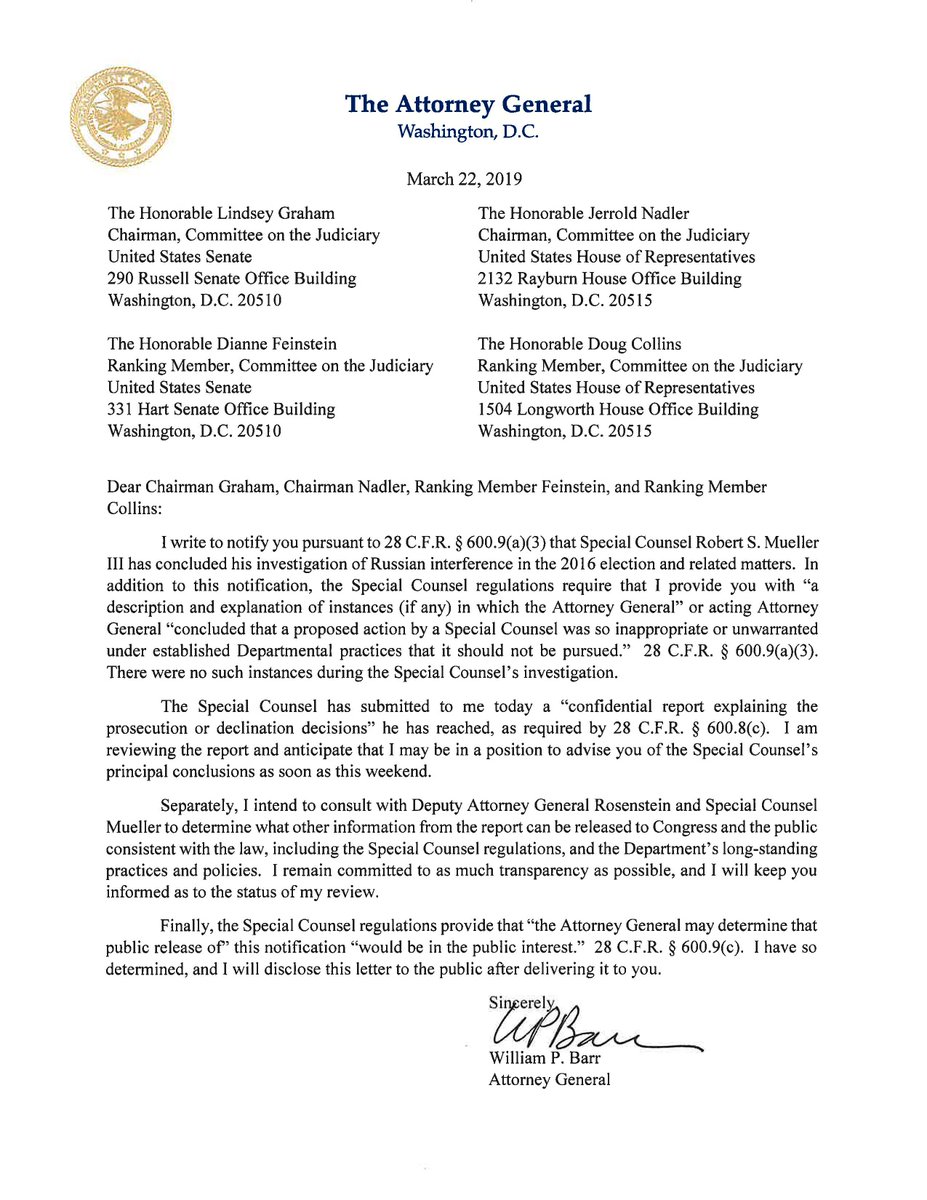
https://twitter.com/RepJerryNadler/status/1109203169194725376/photo/1?ref_src=twsrc%5Etfw%7Ctwcamp%5Etweetembed%7Ctwterm%5E1109203169194725376&ref_url=https%3A%2F%2Fneonnettle.com%2Fnews%2F6899-media-dems-celebrities-in-shock-as-mueller-report-clears-trump
The mainstream media is shell shocked following the news of the submission of Robert Mueller's final report of its Russia investigation which revealed president Donald Trump would not face any criminal charges.
The 'Russia-Trump' narrative, something the Democrats have been holding onto for the past two years, is now no longer available at their disposal.The question is, what else will they use?
Amongst the shocked liberal media was MSNBC host Chris Matthews, who appeared outraged that there would be no criminal charges against Trump.
READ MORE: https://neonnettle.com/news/6899-media-dems-celebrities-in-shock-as-mueller-report-clears-trump
© Neon Nettle

https://twitter.com/RepJerryNadler/status/1109203169194725376/photo/1?ref_src=twsrc%5Etfw%7Ctwcamp%5Etweetembed%7Ctwterm%5E1109203169194725376&ref_url=https%3A%2F%2Fneonnettle.com%2Fnews%2F6899-media-dems-celebrities-in-shock-as-mueller-report-clears-trump
The mainstream media is shell shocked following the news of the submission of Robert Mueller's final report of its Russia investigation which revealed president Donald Trump would not face any criminal charges.
The 'Russia-Trump' narrative, something the Democrats have been holding onto for the past two years, is now no longer available at their disposal.The question is, what else will they use?
Amongst the shocked liberal media was MSNBC host Chris Matthews, who appeared outraged that there would be no criminal charges against Trump.
READ MORE: https://neonnettle.com/news/6899-media-dems-celebrities-in-shock-as-mueller-report-clears-trump
© Neon Nettle
Thursday, March 21, 2019
Wednesday, March 20, 2019
Tuesday, March 19, 2019
Monday, March 18, 2019
Trump Dossier Author Admits Source Was Fake News Stories Found Online
Former British spy Christopher Steele has admitted that he used fake news stories he found online as sources for the now-infamous Trump-Russia dossier he authored.

In his stunning confession, Steele admits that a key source was a CNN website called "CNN iReport" that allowed users to upload unverified and unedited stories.
The site allowed anyone to publish articles, fabricated or not, without needing approval and without being fact-checked.
To put it into perspective, it works in the same way as any public forum, so using it as a source would equate to using a work of fiction that has been posted anonymously to a site such as Reddit or 4Chan.

READ MORE: https://neonnettle.com/news/6833-trump-dossier-author-admits-source-was-fake-news-stories-found-online
© Neon Nettle

In his stunning confession, Steele admits that a key source was a CNN website called "CNN iReport" that allowed users to upload unverified and unedited stories.
The site allowed anyone to publish articles, fabricated or not, without needing approval and without being fact-checked.
To put it into perspective, it works in the same way as any public forum, so using it as a source would equate to using a work of fiction that has been posted anonymously to a site such as Reddit or 4Chan.

READ MORE: https://neonnettle.com/news/6833-trump-dossier-author-admits-source-was-fake-news-stories-found-online
© Neon Nettle
Sunday, March 17, 2019
Saturday, March 16, 2019
Opening Giuoco Piano. mini game 16 moves
INACCURACY (+0.07) A better move was 9... Nge7
(9... Nge7 10. d5 Na5 11. Rc1 O-O12. O-O d6 13. Re1 Bd7 14. Bd3)10. Qb3 Qe7 11. O-O Nf6 12. e5 Nd7
BLUNDER (+5.55) The best move was 12... dxe5
(12... dxe5 13. dxe5 Ng4 14. e6 f615. Rac1 O-O 16. Bd5 Re8 17. a3)13. exd6 Qxd6 14. Rfe1+ Kf8 15. Bxf7
MISTAKE (+3.95) The best move was 15. Ng5
(15. Ng5 Nxd4 16. Qe3 Qe5 17. Nde4Nc5 18. Nxc5 Qxe3 19. Rxe3 g6)15... Na5
BLUNDER (♔ MATE IN 1) The best move was 15... Nf6
(15... Nf6 16. Bc4 Na5 17. Qc3 Nxc418. Nxc4 Qa6 19. Ncd2 Qd6 20. Rab1)16. Re8#
Subscribe to:
Posts (Atom)






